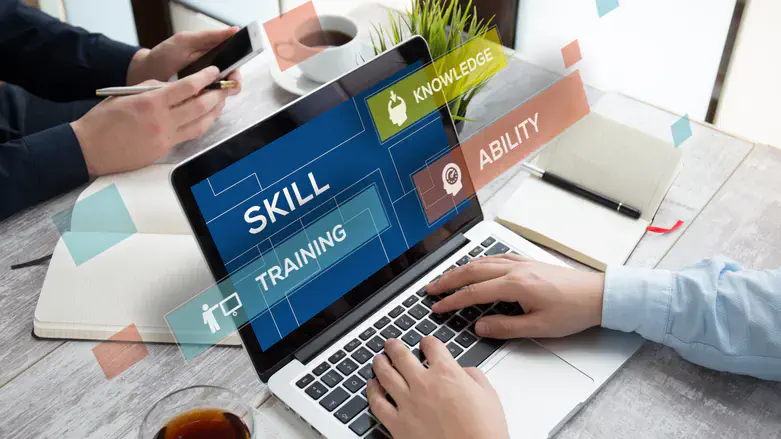
Technology has greatly changed education by providing many tools to improve how we study. Educational software leads this change. This article shows how software can improve studying techniques. It includes ideas from experts and real-life examples to explain how digital tools can help education.
Interactive Learning Environments
Engaging Students Through Interaction
Interactive learning keeps students engaged and motivated. Nearpod and Pear Deck are popular platforms. They allow teachers to create quizzes, polls, and group activities. These tools make learning engaging. They encourage interaction and help with understanding. Bill Gates believes interactive learning is key in modern education. He says technology can tailor learning to each student's needs.
Real-Time Feedback
Interactive learning environments have a big advantage: they can provide feedback right away. Students can immediately see the results of their work. They can understand their mistakes and make needed changes. This instant feedback loop helps reinforce learning and keeps students on track. A study from the University of Michigan found that students who get quick feedback from interactive tools see a 20% grade boost. This is unlike those who get feedback later.
Advanced Study Methods
Personalized Learning Paths
Advanced study methods facilitated by educational software solutions include personalized learning paths, where tools like DreamBox Learning and Knewton utilize adaptive algorithms to assess a student's performance and adjust content accordingly. This approach not only tailors the learning experience to each student but also highlights their strengths and targets areas needing improvement. Sal Khan, the founder of Khan Academy, advocates for personalized learning because it enables students to learn at their own pace, ensuring mastery of each concept before progressing further.
In institutions exploring innovative educational approaches, collaboration with an essay writing service can provide valuable insights into how personalized learning paths can be effectively integrated into curriculum development. These services offer expertise in educational research and best practices, supporting educators in implementing personalized learning strategies that optimize student engagement and academic success.
Gamification
Gamification is another advanced study method that educational software leverages to enhance learning. Platforms like Kahoot! and Classcraft use game elements. These include points, badges, and leaderboards. As a result, learning becomes fun and engaging. In addition, this technique, known as gamification, boosts student motivation and engagement. The International Journal of Educational Technology in Higher Education showed this. This leads to better learning.
Digital Learning Tools
Enhancing Accessibility
Digital learning tools have made education more accessible than ever before. Students can access many resources. These include e-books, videos, and simulations. You can access online courses from anywhere with the internet. Companies like Coursera and edX offer courses from top universities. This opportunity allows students to learn from the best teachers worldwide. It's especially helpful for those in remote areas or with disabilities. It gives them opportunities that were previously out of reach.
Collaboration and Communication
Digital learning tools also enhance collaboration and communication among students and teachers. Platforms like Google Classroom and Microsoft Teams help with group projects and discussions. They let students work together easily, no matter where they are. This collaboration boosts learning. It also prepares students for teamwork and communication skills. These skills are needed in the modern workplace.
Educational Software Solutions
Comprehensive Learning Management Systems
Educational software, such as Blackboard and Canvas, provides complete learning management systems (LMS). These systems make education more efficient. The platforms have many features. These include course management, grade tracking, and communication tools. They are all in one place. LMS platforms integrate many parts of learning. They make it easier for educators to manage courses and for students to stay organized.
Virtual Labs and Simulations
Virtual labs and simulations are powerful teaching tools. They give hands-on learning without the need for physical resources. Tools like Labster offer virtual science labs. In them, students can do experiments and explore complex ideas in a risk-free way. The simulations enhance understanding and retention. They let students apply theory in practice.
Cognitive Enhancement Strategies
Mind Mapping and Visualization
Strategies for cognitive enhancement include mind mapping and visualization tools. They help students organize and remember information better. Software like MindMeister and Lucidchart lets students create visual representations of their ideas. This makes it easier to understand complex relationships and concepts. This is in line with cognitive theories. They emphasize that visual learning is important for memory and understanding.
AI-Powered Tutoring Systems
AI-powered tutoring systems, like Squirrel AI and Carnegie Learning, provide personalized instruction. The systems adapt to each student's style and pace. The systems use AI to analyze student data. They deliver custom lessons for specific needs. This targeted approach improves grades. It also boosts students' confidence and motivation.
Note-Taking and Organization
Effective note-taking and organization are essential for successful studying. Evernote and OneNote are digital tools. They have advanced features for taking, organizing, and finding notes. The tools support many formats, such as text, audio, and images. They let students capture and organize information in ways that fit their styles. By keeping their study materials organized, students can boost their productivity. They can also cut the stress of studying.
The Future of Educational Technology
As technology evolves, educational software's potential to improve studying will only grow. AR and VR offer new ways to make learning fun and engaging. They offer immersive experiences that make learning more engaging and effective. AI and machine learning advancements will also help. They will enable more personalized and adaptive learning. This will ensure that every student can reach their full potential.